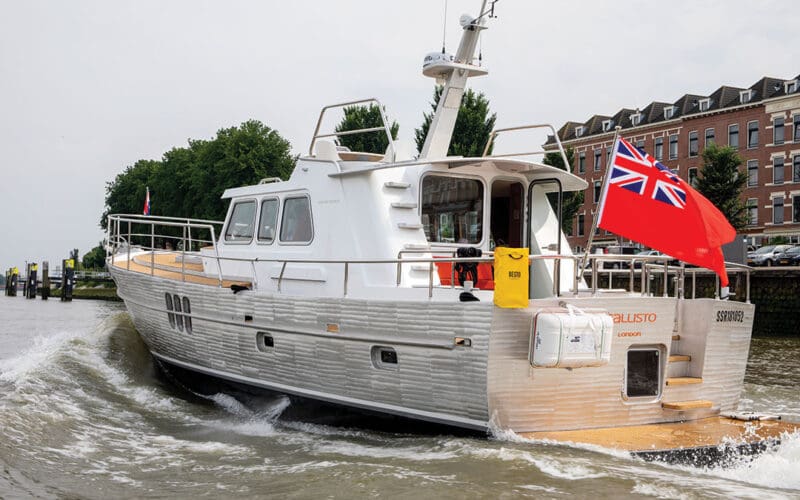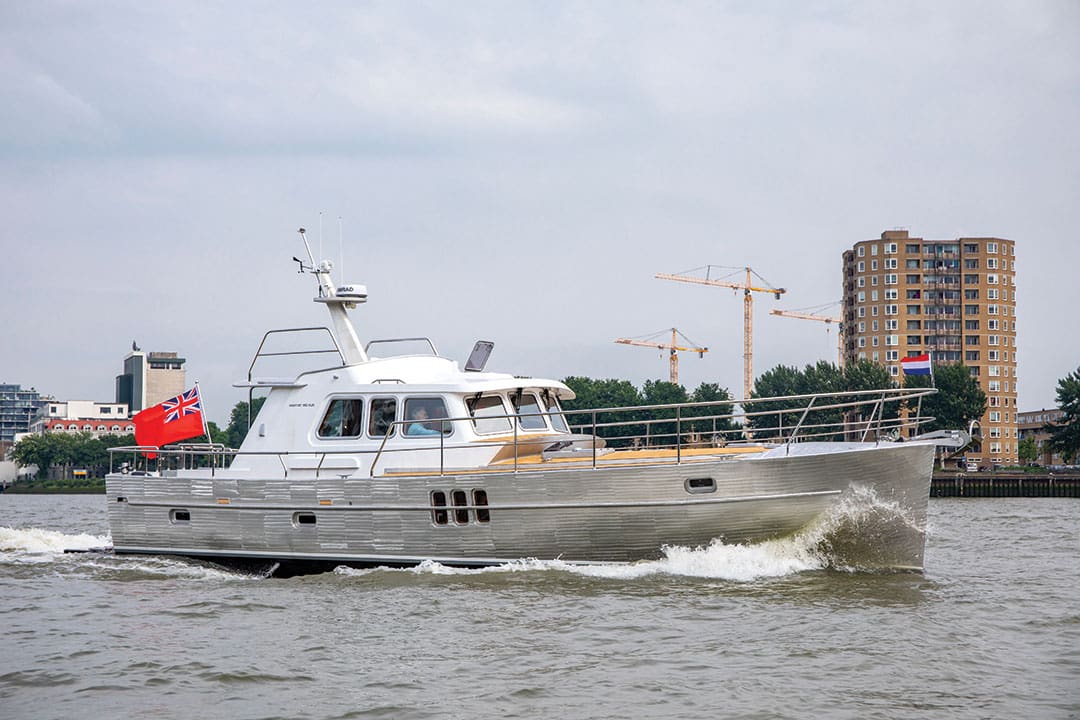
When voyager Michael Harrington was looking for a new power voyaging boat, he had a simple requirement: it had to have long range — really long range. “I’m a former sailing guy,” Harrington, a publishing business owner, said. “I wanted to do solo stuff and wanted to go long distances.” Harrington had in mind a crossing of the Atlantic via the middle route. Another item on Harrington’s checklist was an aluminum boat. “I wanted something sturdy and resilient, that doesn’t need maintenance.” His search led him to some smaller boatbuilders in Australia and the Netherlands. Ultimately he chose Deepwater Yachts located at The Hague in the Netherlands.
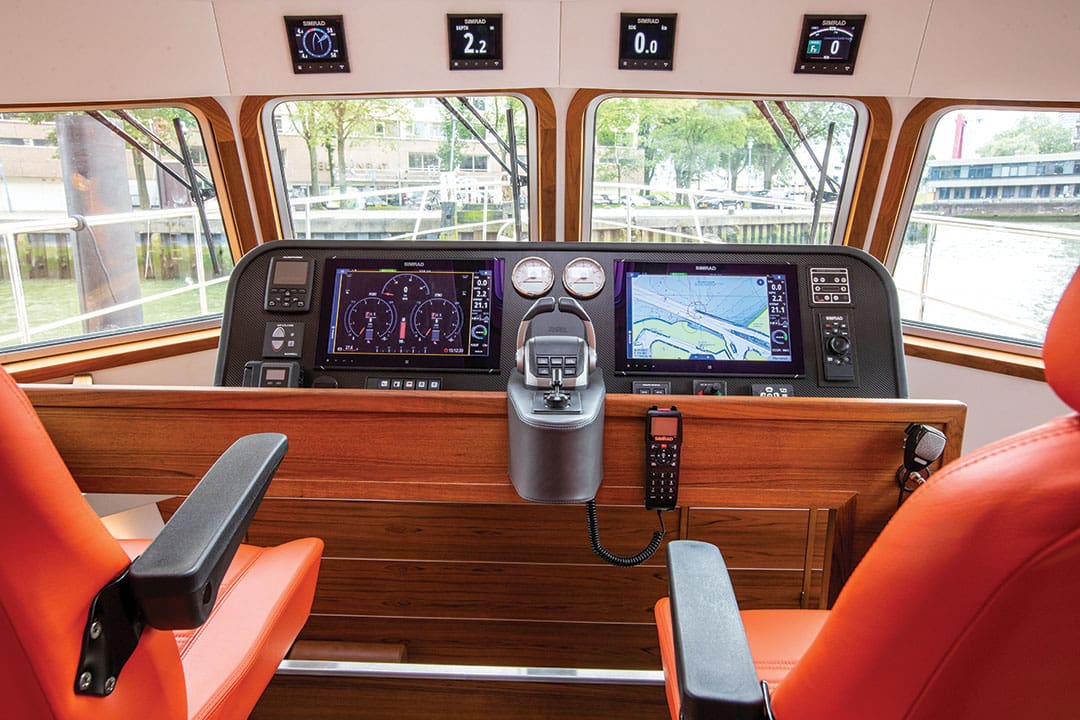
Deepwater designs and builds a distinctive line of aluminum power voyagers dubbed the Korvet line. According to Peter Bost, founder and CEO of Deepwater, Harrington knew what he wanted when he contacted Bost’s firm. “Michael had researched on the internet all types of boats to replace the Tiara he lived on in Nassau,” Bost wrote in an email. “He kept coming back to the Korvet14CLR and in a phone call said it was the only boat he considered. He decided to fly to Amsterdam for an afternoon for a hectic visit to the Korvet. This visit made him decide to go ahead and soon after his visit we came to an agreement to build the boat. He did have one very special request; the boat should be able to cross the Atlantic from the Azores to Bermuda, about the longest stretch of 2,000 nautical miles!”
Harrington was interested in having the Korvet14CLR model built. A big issue that Bost and Deepwater needed to address, however, was Harrington’s request for a boat with Azores-to-Bermuda range. The standard Korvet14CLR has a fuel capacity of 687 gallons, which wasn’t enough to make the crossing. Bost writes, “The regular Korvet14CLR carries 2,600 liters of fuel. We increased fuel capacity by 2,000 liters [528 gallons], so 4,600 [1,215 gallons] in total.
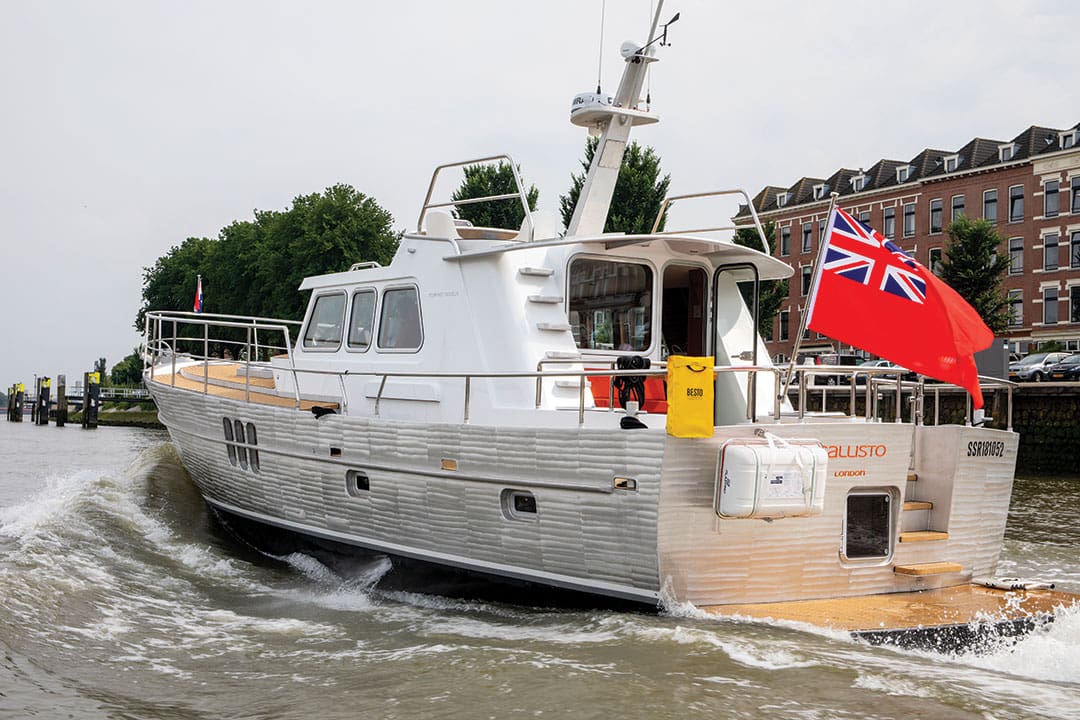
“We made adjustments to the swimming platform by adding 30 cm to it and make it into a fuel tank of 1,000 liters [264 gallons]. Then we modified the water tank of 1,000 liters into a fuel tank. In this way we added the 2,000 liters extra that were required. Of course, a manifold with pump had to be constructed to transfer fuel between tanks and stabilize the boat. Both new tanks fed into the central tank, located in the engine room and under the salon floor. Because the water tank had become a fuel tank, we had a new stainless steel tank made with a capacity of 800 liters [211 gallons]. This tank was fitted under the bed in the aft cabin.”
Harrington also wanted as much redundancy as possible, with twin engines, dual fuel filters and a high output alternator on each engine.
With the modifications Bost considered Harrington’s boat a custom build and changed Callisto’s model designation to Korvet50XLR. Harrington now had a boat with the range he needed. After a 24-hour shakedown cruise from Rotterdam to Brighton, England, Harrington decided Callisto was ready. On July 6, 2021, with his daughter plus a friend and his daughter aboard, Harrington topped off the tanks and headed for the Azores. They were forced to make a 24-hour medical stop in Camaret, France before continuing their passage. At a cruising speed of nine to 10 knots, the sweet spot of efficiency for the twin 230-horsepower Volvo Penta D4-230s, they arrived in Ponta Delgada on the island of San Miguel. After heading northwest through the Azores to the port of Horta on the island of Faial, where Harrington topped off the tanks, Callisto departed for Bermuda. Nine days of steaming later they arrived. “There was very little fuel left in the tanks,” Harrington said with a small laugh. “We hadn’t factoring in the effect of a crosswind on our fuel usage.” The last leg was a four-day trip to Nassau in the Bahamas. Summing up Callisto’s speed envelope, Harrington said, “Throughout the passage we did as much as 11 knots and little as seven knots.”
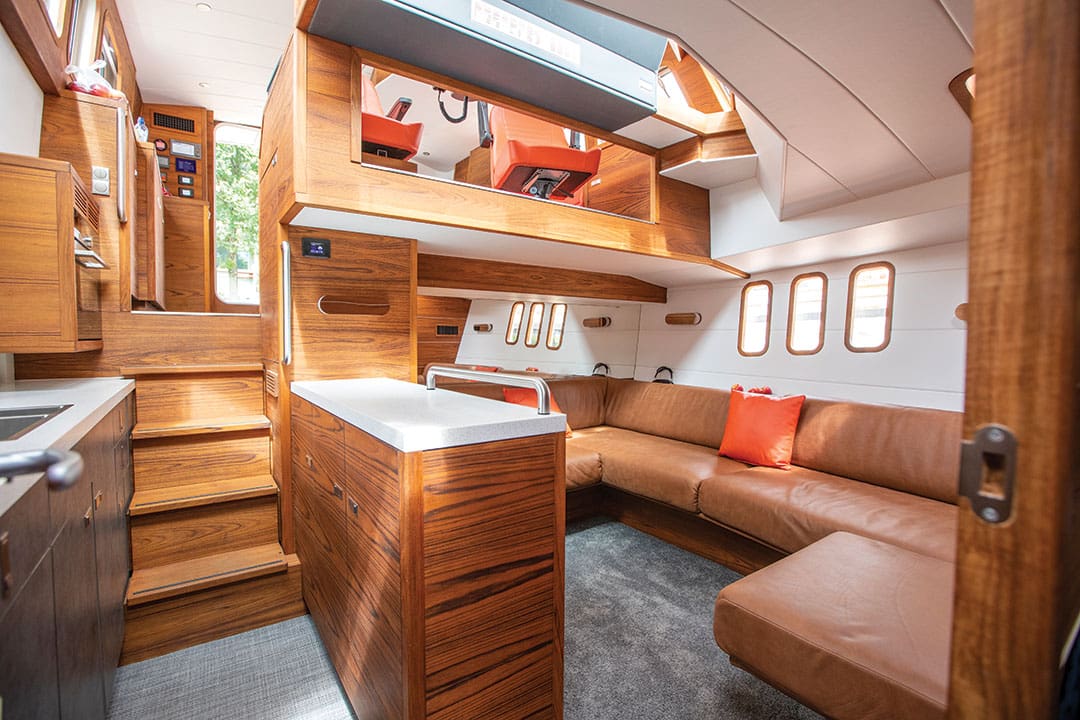
As for future voyages aboard Callisto, Harrington regularly makes trips from the Bahamas across to Ft. Lauderdale. He also is considering a passage up the U.S. East Coast then to Greenland, Iceland and Europe.
When asked about the reasons for building in aluminum, Deepwater’s Bost made these points. “There are several advantages of building in aluminum. Ranking the advantages depends very much on one’s needs and expectations. For me the most important advantage is the reduced weight. Aluminum is 30% lighter than steel but 20% thicker plates are required to obtain the same strength as steel. Effectively that gives a 25% saving in weight. Because of the lighter hull, an aluminum boat with the right hull shape can maintain a cruising speed of nine to 10 knots at very favorable fuel consumption levels. The engines run at around 45% of their power and have just reached their maximum torque. On the Atlantic crossing the Volvo Penta D4 230HP engines consumed nine LPH each while traveling at nine knots average. Drop the speed to seven to eight knots and fuel consumption falls to six to seven LPH per engine.
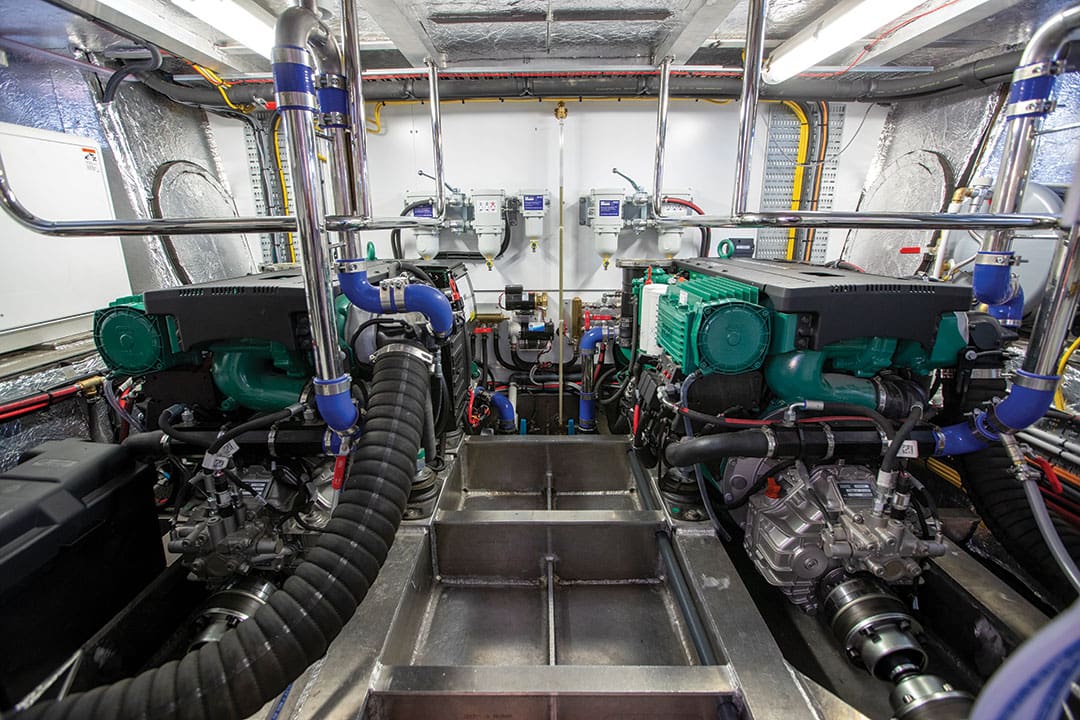
“Another important advantage of aluminum is that it does not require a paint system to protect the metal. This is because aluminum develops a thin oxide layer on the surface when the metal comes in contact with oxygen. The oxide layer protects the aluminum against corrosion and if it is damaged, it will immediately regenerate. Of course the underwater section of the hull is covered with an anti-fouling system. We sometimes use 3M wrap film on the superstructure for color. The costs savings versus a yacht with a paint system are considerable.
“Aluminum boats can stay in the water all winter. Because GRP boats need to dry out and steel boats rust, they are stored in winter in heated facilities. This costly handling of the boats is not necessary with an aluminum boat.” n

